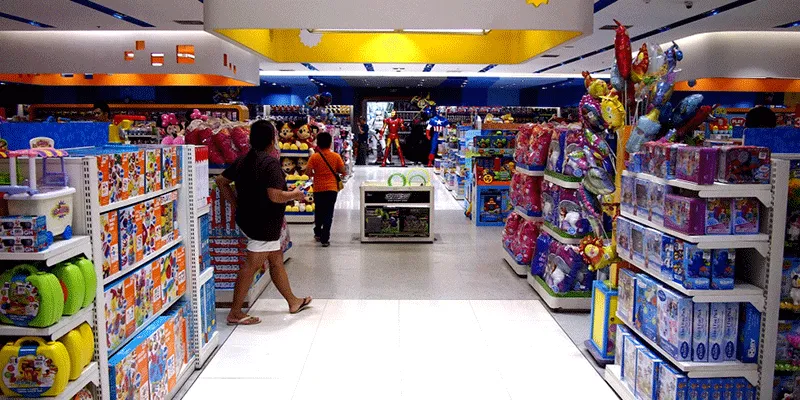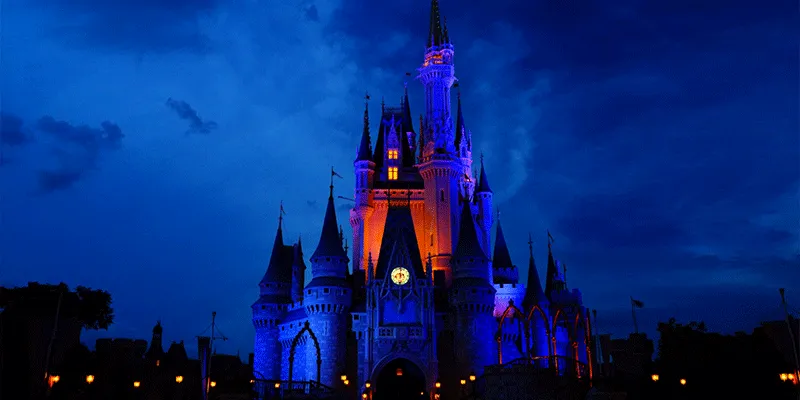Where can your customer find you?
So far, we have covered seven building blocks. You may remember that we covered the seventh one last week, which is, how to choose partners who can strengthen your business. Today we will address the eighth building block called Channels, which is nothing but all the places your customer can buy your products from.
It could be a physical outlet – such as your own store, or shelf space in supermarkets and stores, kiosks at strategic locations such as airports, railway stations, bus stands, corporate offices, hospitals, educational institutions etc. Or it could be a combination of both.
Patanjali products, for instance, were available only in Patanjali outlets till mid-2016 and then started finding their place on the shelves of most supermarket chains and drugstores.
It could be online, from a portal or an app. You could have your own vending portal like www.lowkal.in or it could be available on third party ecommerce portals such as Amazon, Flipkart, etc. Again, it could also be a combination of both.
Puma, for instance, sells on its own portal as well as on Amazon.

Entrepreneurs can choose between physical outlets or ecommerce portals
Online or off-line?
It could be a combination of online-offline presence too. Many entrepreneurs start vending on third party ecommerce portals, then on their own apps, and then open physical outlets.
The decision is largely driven by their vision for expansion and how much funding they have been able to raise to fuel that expansion plan. Lenskart started with their own online portal, www.lenskart.com and then moved on to opening physical stores or experience centres.
Your product could be on a mobile app too and your customer may be able to download the app from Playstore/ Appstore depending on whether he has an Android phone or an ios.
For instance, Flipkart tried doing away with its portal and going completely the app way, but somehow customers did not migrate to the app and Flipkart re-launched the portal.
You could sell only on social media too.
Stealastyle, a mentee of CARMa, sells designer lehengas only on Facebook. I know a number of bakery entrepreneurs who sell delicious goodies like cakes, chocolates, pastries, savouries, doughnuts and the like only on Facebook. Social media such as Whatsapp is also being used extensively in what is called geotargeting. This is a push notification sent on Whatsapp to your mobile about for instance, a new shoe, a discount on the shoe, an offer, or a reward even as you walk past a shoe store.
Geotargeting and sales
Recently one of us found that an entrepreneur was selling exclusively by geotargeting; he has no outlet, no portal, but since he sells health juices, anyone who comes out of a gym or from a run receives a Whataspp message about his product, and all you have to do is say Yes or No, and if you say Yes, you get a message asking for your pin, and once you send the pin, the product will be delivered within half hour! The choices are limited of course, for now it is only ragi-wheatgrass juice and a karela-jaggery-tamarind juice. We also think that for now, the service is available only in Jayanagar in Bangalore.
So, the channel is nothing but the place where your customer can find your product to buy. If your product is available both online and offline, your own portal and on other ecommerce portals, in different outlets and formats, it is called a multichannel experience. But when all these channels are seamlessly integrated on handheld devices, laptops, phone, social media, it is called an omni-channel experience.
Let us now understand how a beautiful brand called Disney makes omnichannel work for it, for its Parks and Vacations business, within the framework of the four truths of the Buddhist doctrine.
We wouldn’t be exaggerating in saying this - if ever there is a brand that knows to keep its customers deliriously happy, it is Disney.

Disney created a magical space for young children
The theme parks vertical of Disney contributes more than 40% to their total revenues and is growing year on year with ginormous footfalls.
Walt Disney opened the first theme park in 1955 and the idea behind it was to create a magical space for children and their parents to come together, have fun, discover new things about each other, and go home, better bonded.
What is the pain point Disney tried to address?
In any such park, even if the infrastructure is beautiful, what are the things that make a huge dent in the customer experience?
Getting to the theme park, for one. Standing in queues is the biggest deal breaker - to buy tickets, to go on rides, to buy merchandise, and food, for another. You also have to find hotels nearby, book rooms, find transport to commute between your hotel and the park, etc.
We said, to be called an omnichannel experience, it should be a seamless integration of all the channels to deliver customer delight, right? See how Disney gets it so right.
Firstly, Disney has mastered the art of entertainment by paying attention to the smallest and most innocuous of details. Its website is mobile-responsive and works every single time. There are no glitches, there is no downtime, there is no browser compatibility issues, and there is simply no downside in customer experience.
You can plan the entire trip on their website pleasurably and seamlessly. The UI is phenomenal and the action buttons are visible without being in-your-face-prompts. So, the whole experience of planning and booking a Disney tour adds to the excitement of the tour itself!
What was the origin or source of pain?
Most theme parks focus on getting the best rides, laying out the park, offering a huge variety of rides, and making the park a self-sufficient place for children and adults alike. What they ignore are the mundane logistics details. For example, they take it for granted that if they offer the best rides, large numbers of people will throng there - and that is good for business. In the process, so what if kids and parents have to wait in long queues for everything? It comes with the territory!
Well, said Disney, there is no need for the wait. If there is a way we can use technology to avoid queues and enhance customer experience, we will, - and delight our customers.
How did Disney put an end to this pain?
Disney didn’t just create theme parks, but they also built hotels around the parks. These hotels have also contributed to the whole immersive experience as they were themed hotels – Harry Potter, Star Wars, and the like. So, no surprises that their occupancy rate throughout the year is 90 per cent!
Disney introduced the MagicBand and that was a masterstroke. MagicBand is a colourful wristband - a single device that effortlessly connects customers to all the vacation plans they make using My Disney Experience.
It enables them to travel lighter throughout their vacation, use it to enter parks, unlock their Disney Resort hotel rooms - and even buy food and merchandise. Bingo! One key that not just ended all customer pain but made the whole Disney experience unparalleled.
What did Disney do to enable their customers avoid pain?
They personalised the whole experience. And they used technology to do so. The MagicBand not only unlocked hotel room doors, enabled payment, booked rides, but threw up surprises as well. For instance after a ride, the photograph of the whole family enjoying the ride or the family caught in a candid moment would appear on the app, much to the glee of the family members. Similarly, if a child could not go on a ride because he was too short, a pass was issued so that on the next ride, that child could get right to the front!
Now we will try and understand how Disney got this seamless omnichannel strategy right by analysing it within the framework of the eight guiding posts of the Buddhist doctrine.
The rock-stars of the Disney experience are their website, smart apps, the MagicBand and online platform MyMagicPlus. They are the eyes and ears, and feel and touch elements of the excitement that builds up right from the moment you think of your vacation.
Parks? Attractions? Restaurants? Entertainment? Itinerary? Wish lists? It is a king-sized right view! And it does not stop at the planning stage. Inside the park too, you are guided around, given wait times on rides, helped to book restaurants and even meet your favourite characters.
How can a wristband be transformed into personalized treasure trove of excitement? That’s the brilliant right thinking Disney has put into it. Starting from personalization of the band’s colour and the snap-on trinkets it can carry.
It is the ‘open sesame’ wrist wand to rooms, park entry (even to fast track queues), payments – heck, even photo capture! What’s more, you willingly let your data be captured (without feeling exploited) because you trust Disney to use it to better customer experience.
Disney delights the customers and how! The email that they send their customers to create an account on their system; the view of the entire experience they provide on their website to help you plan and book your holiday; the branded box that arrives home a month before you take off on your Disney experience; the MagicBands with different colours and your names etched; the food you ordered through this band arriving at the exact spot you are seated; Disney characters walking up to a child and calling out by name; the follow-up experiences of thank you messages, emailed photos, invitations to share on Facebook, and reminders of upcoming events – it is right speech that shows what it is worth with the right actions.
We don’t just talk, we do – is what they seem to say as they blend a winning elixir of content, context and experiences.
Disney is not just a maestro of omni-channel experience – they are ‘the’ omni-channel company itself.
From Mickey’s entry in 1927 into film entertainment, to the opening of Disney World in 1971 (followed by their entry into the hotels, restaurants and cruise business), to their global franchising and merchandising, and to their My Disney Experience tool – they have sprinkled the magic dust in everyone’s lives – customers, employees and partners alike. Right livelihood seems a huge understatement, don’t you think?
Disney World Resort is all set to unfurl further excitement. Star Wars ‘Galaxy Edge’, Ratatouille in the France pavilion, SPACE, a dining experience above the earth – these are some of the exciting experiences set to take off. Disney’s right diligence is also evident in their new over-the-top (OTT) 2019 strategy, known as Disney+.
This OTT platform will host their existing huge movie collection (including Pixar content), as well as their studded future productions. To back these plans, Disney is closing deals with Fox and Hulu.
Disney’s CEO, Bob Iger, calls creativity the “the heart and soul of Disney”.
The secret sauce to this is the amazing right mindfulness in identifying, motivating, and supporting innovation leaders – who in turn multiply a community of innovators.
Be it in the Disney enterprise or their subsidiary Pixar – or their later acquisitions, Lucasfilm and Marvel Entertainment – Disney’s CEO has reimagined the business model to place the baton - and faith - in his creative directors as business heads. Little wonder Disney is able to seamlessly architect mind-blowing experiential moments in all channels.
If there's one powerful takeaway from Disney’s iconic success, it is this -your customer is everything. Not just king, but the very reason to do what you do. Disney packs the right concentration of this truth in everything they do.
They understand their customers well before they place their first step into their Vacation Parks - through their content, through a multi-channel experience of print, TV and cinema, through their customer-centric diligence in gathering the right data, distilling the right insights for extraordinary actions, and by inspiring their employees. It is no surprise that they create magical and bigger-than-life experiences that keeps bringing back children and adults alike.
Can you bring the Buddha-inspired ‘wow’ into your customers’ lives by designing an omnichannel experience such as this?







